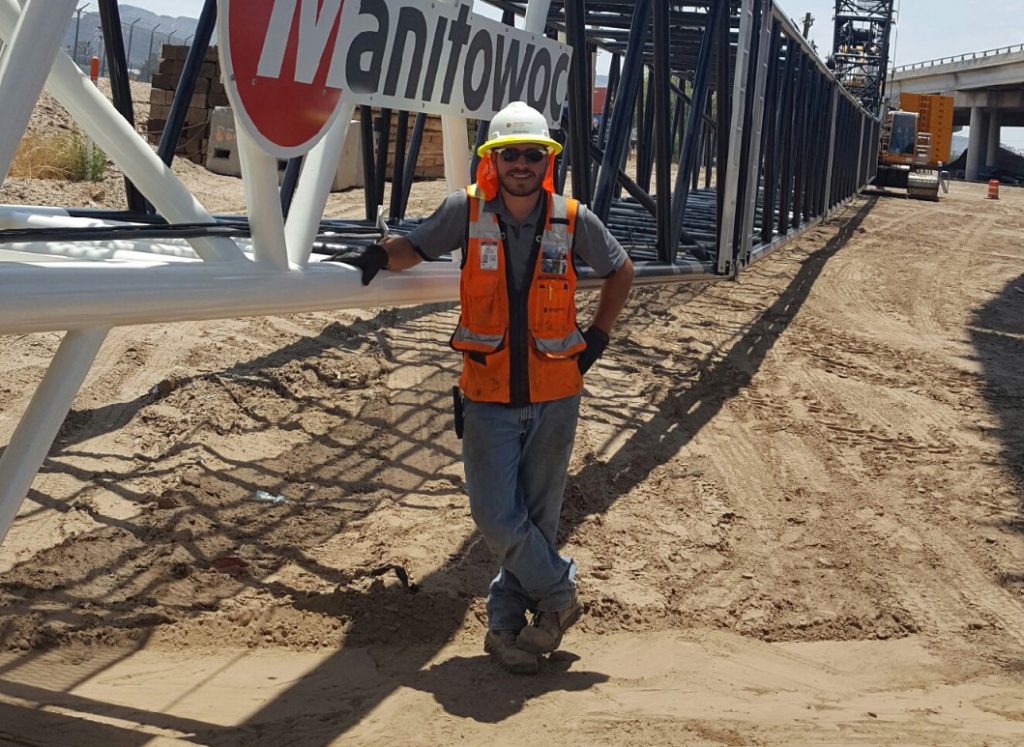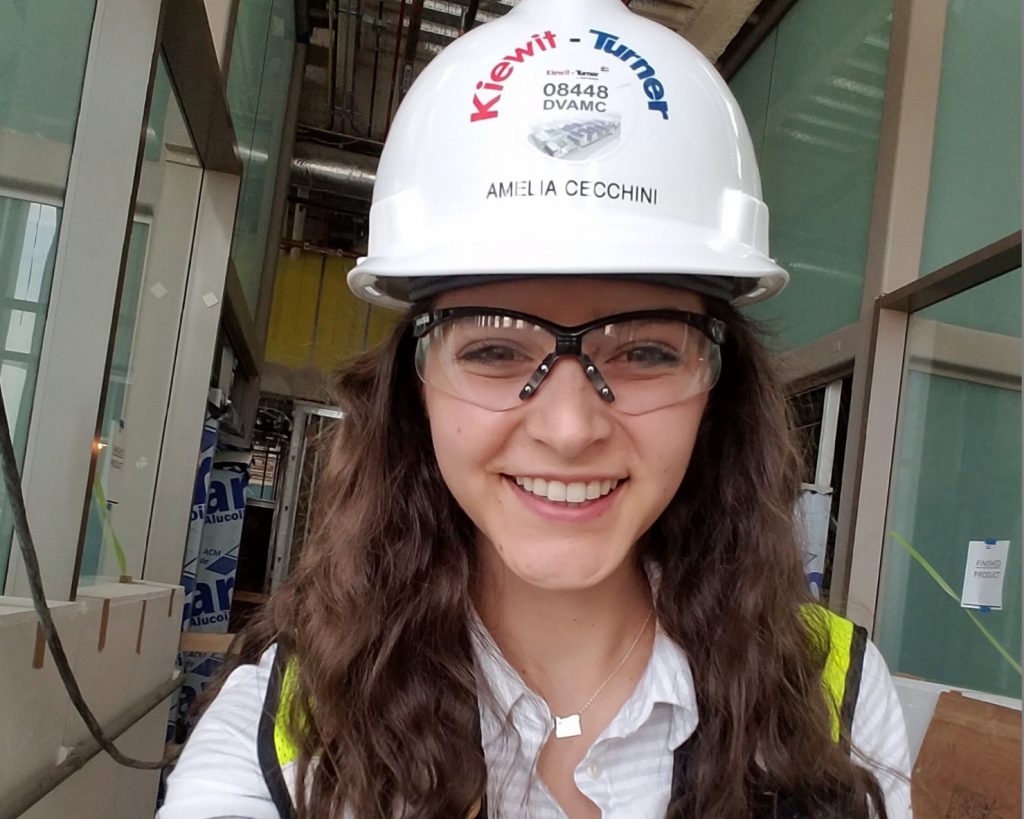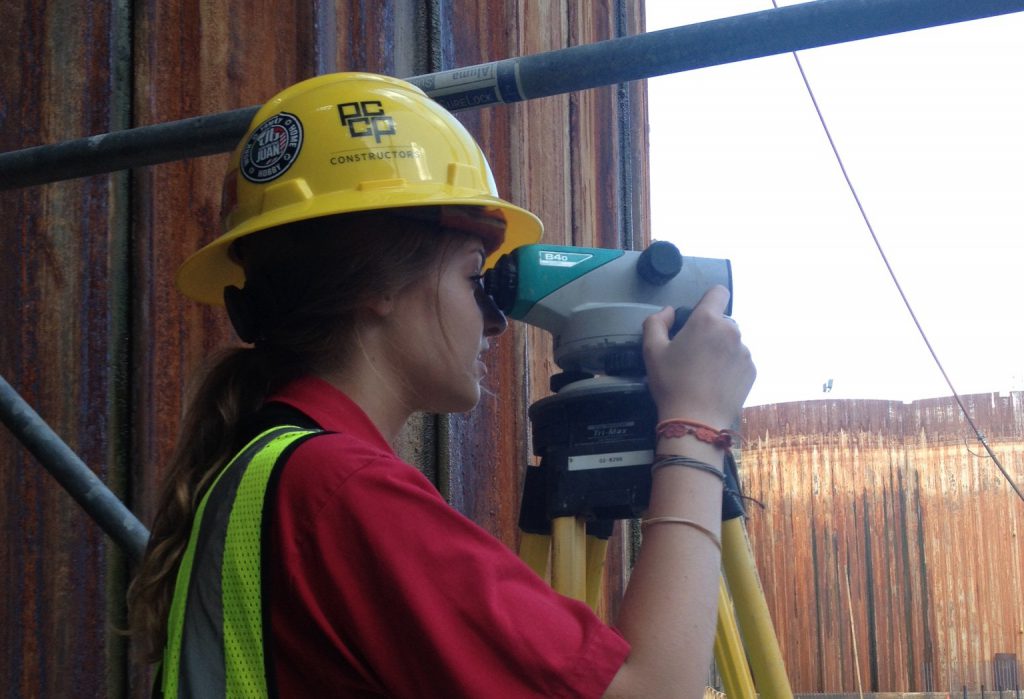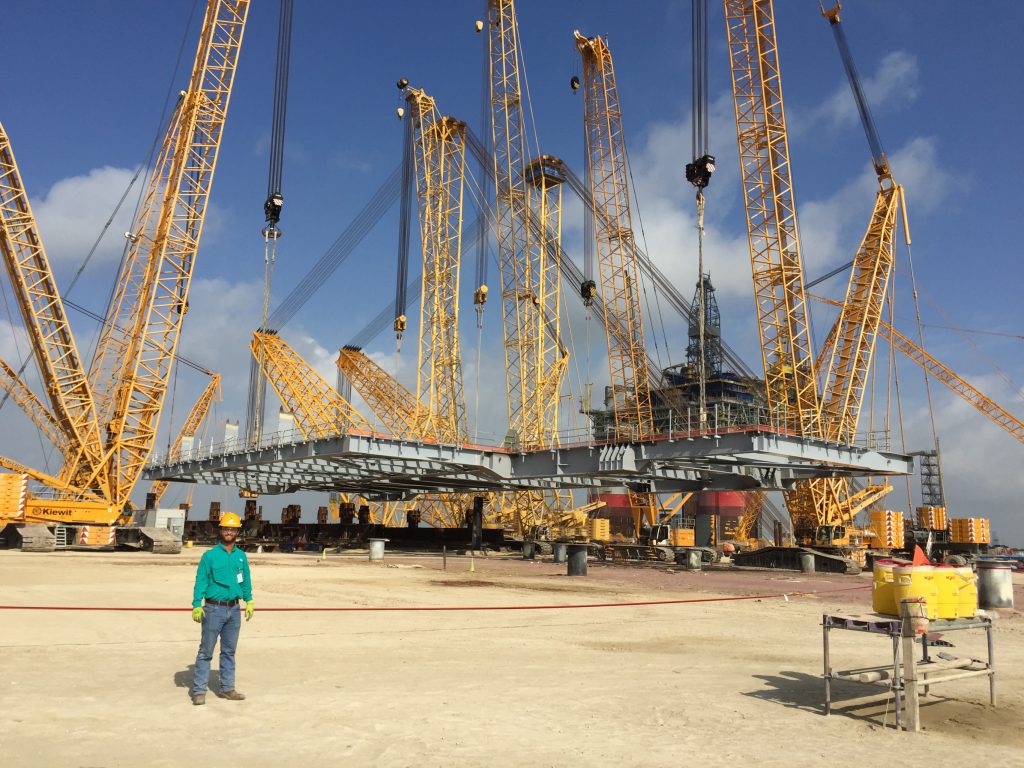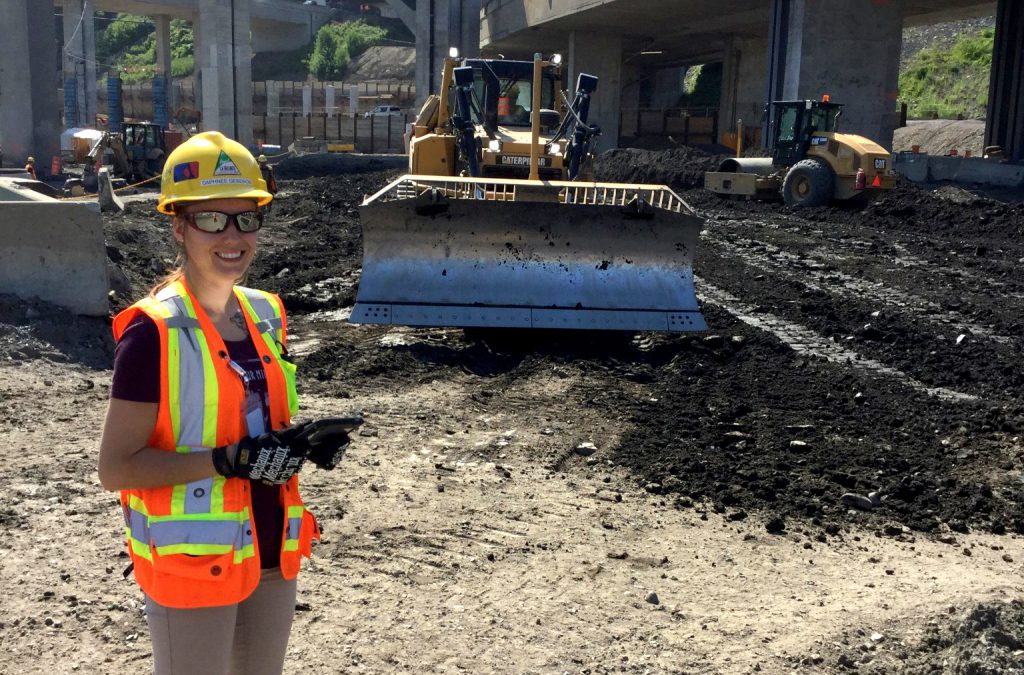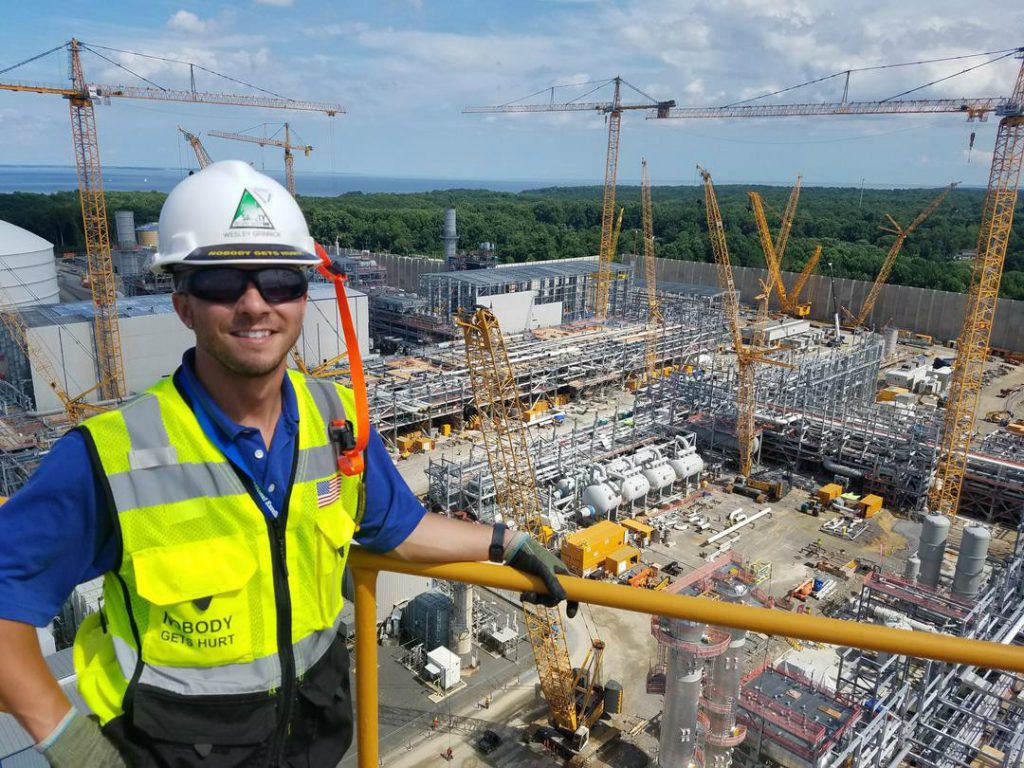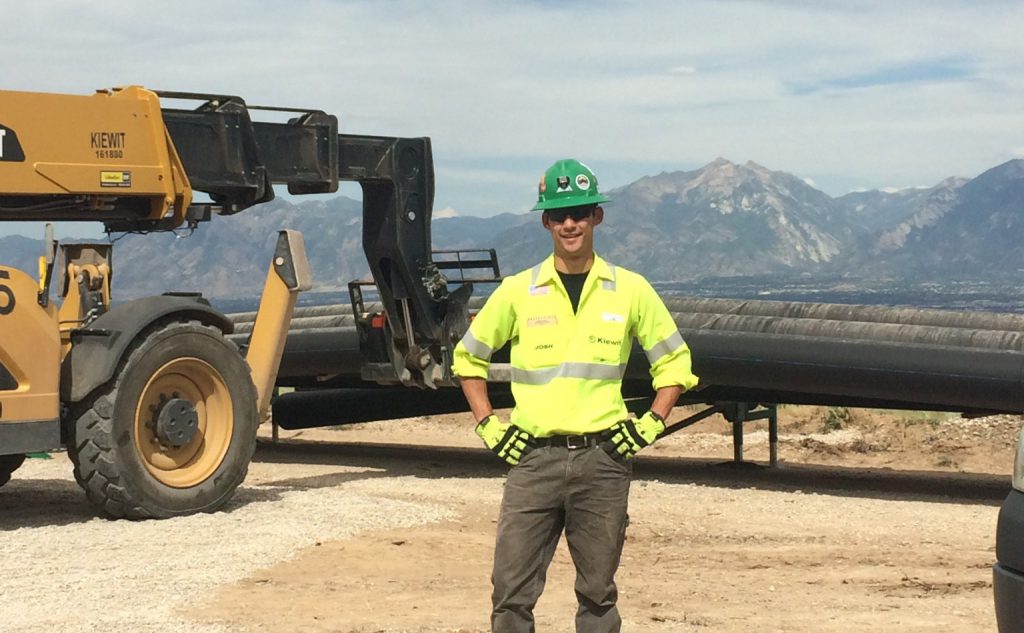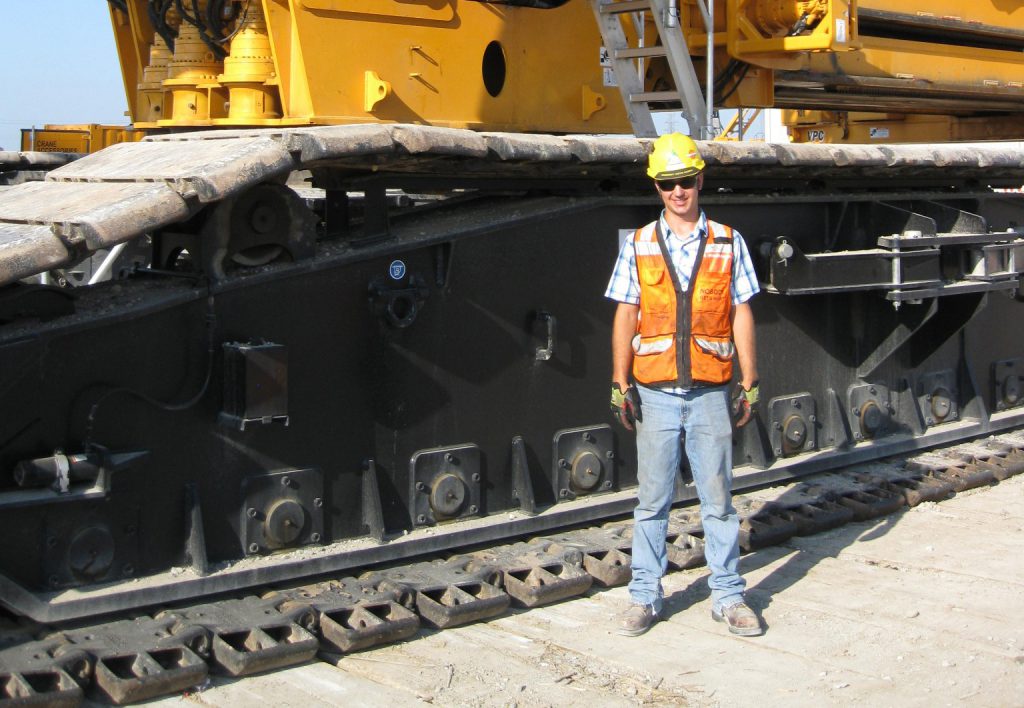Step into the boots of a Kiewit intern or co-op and who knows where they’ll take you. While their assignments are varied — a hospital for veterans in Colorado, a complex interchange in Montréal, a state-of-the-art liquefied natural gas facility in Maryland, and many more across North America and Australia — each of these men and women become an important part of Kiewit’s business. Fully integrated into project or office operations, they get a hands-on feel for what it’s like to support some of the most important energy and infrastructure projects being designed and constructed today. Keep reading to learn more about the wide-ranging, exciting experiences of Kiewit interns and co-ops in their own words — and how aspiring talent can get on board today.
What Types of Internships and co-ops are available at Kiewit?
Kiewit hires for a variety of positions throughout the organization. Some of those positions include:
• Field engineer
• Design engineer
• Estimating
• Safety
• Quality
• Business management
• Environmental
• Equipment
• Procurement
Where are internships and co-ops located?
Kiewit’s operations stretch from coast to coast in the United States and Canada, and so do its internship and co-op opportunities. Positions are available in office locations and on project sites, whether it’s on a transportation project in some of the largest cities in North America, an energy jobsite in rural parts of the United States or Canada, or in the home office in Omaha, Nebraska, where Kiewit has been headquartered since 1884.
When are internships and co-ops available?
Kiewit hires interns and co-ops year-round.
What’s a Kiewit internship or co-op like?
Definitely not ordering coffee of stapling paper all day. An internship or co-op is a sneak peak of what it’s like to be a full-time employee. Supervisors give their interns as much responsibility as they can take on, including assignments that can impact the bottom line. Interns are an important part of Kiewit’s teams and work alongside experienced industry professionals, many of whom started their Kiewit careers as an intern or co-op. Employees are encouraged and expected to help interns and co-ops acclimate to Kiewit’s business and culture by answering questions, giving advice and providing ample opportunities to gain valuable hands-on experience.
Michael Music (University of Toledo) – shown helping with the disassembly of a 300-ton crane – said the most valuable lessons he learned while interning on the Border West Expressway in Texas had to do with safety, teamwork, and honesty.
Amelia Cecchini (Oregon State University) said that as an engineer intern on the U.S. Department of Veterans Affairs Eastern Colorado Medical Center project in Colorado, “I was thrown right into everything from the start and have been given so many opportunities to prove what I’m capable of. My mentors have done an incredible job of helping me learn new things every single day.”
“From working in the field with crews to working in the office with project managers, Kiewit has taught me first-hand that it takes every single person working together to build things right the first time,” said Sarah Hedberg (Purdue University), who worked on the Permanent Canal Closures & Pump Stations project in Louisiana. “At the same time, none of what we’re building matters if we aren’t working safe.”
Can internships and co-ops turn into a full-time career with Kiewit?
The goal of Kiewit’s internship and co-op program is to recruit individuals who are a long-term fit for the organization. Every year, Kiewit offers full-time positions to those who demonstrate a commitment to the organization’s core values, a strong work ethic and a desire to build on the company’s success. The mentality at Kiewit is “hire to retire.”
What stands out in an application?
There are many different skills and experiences that hiring managers look for when selecting the best candidates, some of those include:
• Leadership roles and skills
• Active involvement in campus organizations
• Experience in a construction or labor role
• Knowledge about the Kiewit organization
• Ability to hit the ground running, learn new things and take on many different challenges
How can someone learn more and apply?
Many resources are available for interested candidates. To learn more about the organization, you can: attend an info session or career fair; talk to a professor with knowledge about or exposure to Kiewit; check out Kiewit’s social media pages on Facebook, Twitter and LinkedIn; or talk to a previous Kiewit intern or current employee. You can find complete job descriptions and exactly how to apply on kiewitjobs.com.
Ridge Sandler — Kiewit Offshore Services, Ingleside, Texas
Texas Tech University
“Here at Kiewit Offshore Services in Ingleside, Texas, working around and helping erect one of the biggest offshore oil rigs in the world is an incredible experience to say the least. With Appomattox weighing in at over 35,000 tons (70,000,000 pounds), our yard here does very heavy and strategically planned out lifts. The coolest thing I was able to experience happened halfway through my internship when six massive cranes synchronously floated the power module lower deck that weighed in at more than 1,074 tons (2,149,000 pounds) onto the skidway. This is a big step in the progress of the construction of the rig, now allowing the rest of the module to be stacked up accordingly.”
Daphnée Gendron — Turcot Interchange, Montréal, Québec
École de technologie supérieure
“This is my first internship with Kiewit and I have been assigned to the Turcot project in Montréal as a field engineer. It’s nothing like my previous internships for other companies. Here we need to be resourceful and autonomous; if you’re not, you’ll learn quickly enough! I learned a lot about the steps and procedures that go into a specific operation as well as how to manage my time and priorities. We were taught in school that teamwork is the key to improving and finding solutions. We can really see this is true on the Turcot project. All these skills that Kiewit has taught me have given me the opportunity to improve in my life outside of the field.”
Wesley Ginnick — Cove Point LNG Expansion, Lusby, Maryland
Pennsylvania College of Technology
“Interning at Cove Point, one of the largest projects ever undertaken by Kiewit, has given me seemingly unlimited opportunities to learn and grow through hands-on experience. Whether I was completing a steel take-off, housekeeping walks or production studies, I wasn’t considered ‘just an intern’ but rather an integral part of the team responsible for delivering a once-in-a-lifetime project.”
Joshua Levine — Bingham Tunnel Rehabilitation, South Jordan, Utah
Virginia Tech
“As a soon-to-be commissioned Army officer, the responsibilities and experiences that I am exposed to here as a field engineer intern at the Bingham Tunnel Rehab project are curiously familiar to those that I will encounter in the military. During my rotations through business, safety and field-engineering operations, I have noticed that strong leadership, systematic planning, logistical efficiency and risk management are just some of the similarities between successful management of construction projects and military operations. Overall, I believe that my experiences here will better prepare me for my career in the Army as well as other future careers in the private sector.”
John Johnson — Equipment, Lenexa, Kansas
Pittsburg State University
“The coolest thing I’ve done as an equipment engineer intern was to help in the assembly of the 2014 Manitowoc MLC650 with the variable positioning counterweight that is at the Allen Combined Cycle Project in Memphis. This crane, along with its little sister, the MLC300, will be used to pick 800,000-pound heat recovery steam generator (HRSG) modules. This crane was assembled with 223 feet of main boom, 20 parts of line in the block, and 360 tons of counterweight hanging off the back.”
